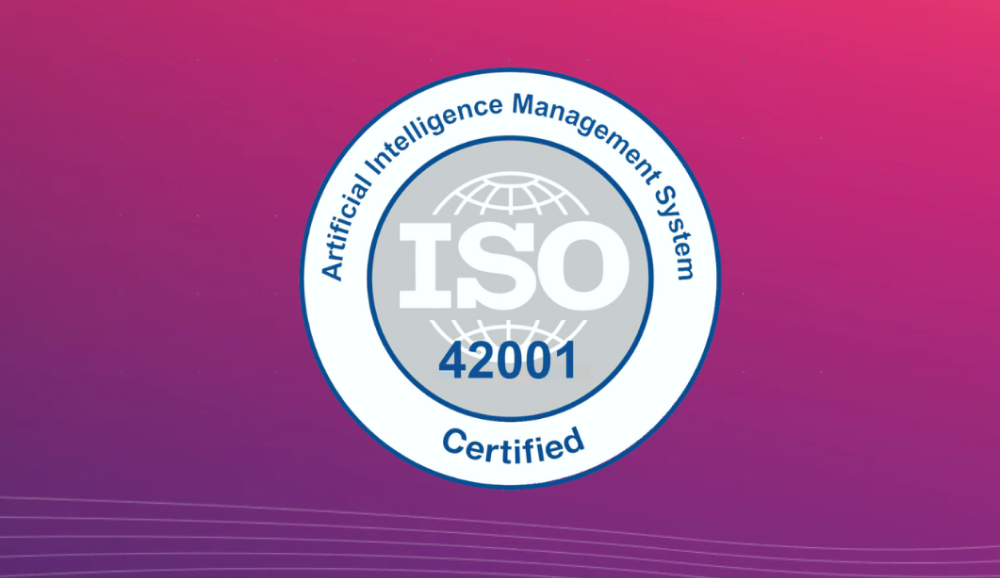From Productivity to Performance: Redefining the ROI of AI for Sales


The first wave of AI in sales promised time savings. The next wave will deliver revenue growth. Here's what's changing, and what sales leaders need to know now.
The Productivity Promise Has Been Delivered
Sales professionals are already experiencing measurable gains from AI sales tools. According to new research from G2 and Vivun surveying 100 sales professionals, 73% of sellers are already using AI in their workflow—a clear signal that AI has moved from experimental to essential.
The productivity benefits are real and quantifiable. Sales reps report saving 2-3 hours daily through automation of meeting notes, research, and task management. Manual prospect research time has been reduced by 40-60%. Communication professionalism has improved by 85% as AI helps craft more polished, strategic outreach.
"AI tools have streamlined my workflow and shortened the sales cycle," one Account Manager shared in the research, "saving time while increasing response rates."
These aren't theoretical gains. Organizations implementing AI sales tools are reporting 200-300% ROI within six months, with 15-25% productivity improvements per rep and 30-40% cost savings on research and administrative overhead.
The productivity chapter of AI in sales has been written. But as G2 Research Principal Blue Bowen pointed out in a recent analysis of the findings, productivity alone doesn't tell the complete story.
The Pipeline Paradox: More Opportunities, Limited Growth
Here's where the data reveals an uncomfortable truth: while AI is generating more pipeline, it's not translating into proportional revenue growth.
The research uncovered what we're calling the Pipeline Paradox. Sales teams using AI report a 35% increase in qualified pipeline—significantly more opportunities entering the funnel. Yet revenue growth sits at 10-20%, a notable gap between opportunity creation and deal conversion.
So why isn't revenue growth matching pipeline growth?
Bowen addressed this head-on during his discussion of the findings: "Pipeline doesn't equal quota. How is the pipeline that you have? Is the lead quality good or are you just having pipeline for pipeline's sake?"
He continued: "The more pipeline you have, it sometimes provides a false increase in early phase confidence for your forecast. So you might have pipeline out the wazoo, but none of it's qualified, none of it's really good."
The issue isn't top-of-funnel creation; AI has proven it can fill pipelines efficiently. The challenge is what happens next: moving opportunities through the complex middle stages of the sales cycle where deals are won or lost.
Why the Middle Funnel is Where AI Must Evolve
Bowen's insights reveal a critical gap in how AI is currently being applied in sales. While the market has saturated the top of the funnel with AI SDRs and lead generation tools, the messy middle remains largely manual.
"That kind of messy middle is where is what differentiates a good sales rep from a bad sales rep," Bowen explained. "It's what progresses a deal along. It's, you know, are you creating a business case alongside the customer or are you kind of copy pasting templates that don't resonate with your customer?"
This is where buyer objections surface, where technical requirements need validation, where stakeholders must be aligned, and where custom materials reflecting solution fit become critical.
The research data supports this gap. While 73% of sales professionals use AI, only 13% are applying AI across their entire workflow. Most usage remains confined to specific tasks—primarily top-of-funnel activities like research and outreach.
"We're seeing the most usage whether it be particular tasks, whether that's researching, whether it's drafting an email," Bowen noted. "It's not embedded across the entire workflows."
Why? A fundamental lack of trust in the quality of the outputs of most AI tools on the market. Sellers don’t perceive them to be customer-ready, so they lean toward top-of-funnel use cases with less perceived risk.
From Task Automation to Strategic Execution
The evolution from productivity to performance requires a fundamental shift in how we think about AI in sales. It's not about better automation—it's about strategic support in the highest-stakes moments of the sales cycle.
Consider what happens in the middle funnel:
- Buyers need technical validation but reps can't always access technical resources on demand
- Stakeholder alignment requires understanding complex buying committee dynamics
- Competitive pressure intensifies, requiring nuanced positioning
- Business cases must be built with customer-specific ROI calculations
- Deal momentum can stall while reps chase down internal approvals and information
This is where the promise of AI agents—not just AI assistants—becomes transformative.
The research reveals growing demand for AI that can handle mid-funnel complexity. 27.3% of respondents said AI currently delivers the most value in prospecting and lead generation, but 21.2% pointed to buyer engagement as the second-highest impact area.
The research revealed some interesting insights:
- AI delivers the strongest gains in engagement (21.2%).
- 85% report improved communication professionalism with AI support .
- Personalized outreach at scale drives 25-40% better response rates.
The conversation is already shifting toward execution, not just efficiency, although productivity still dominates ROI conversations.
Trust: The Gatekeeper to Mid-Funnel AI Adoption
But there's a significant barrier to expanding AI into more strategic sales activities: trust.
The research found that 80% of respondents voiced concerns about trust and accuracy. While reps trust AI most for research tasks, they express the least confidence in customer-facing content—exactly the type of work required in mid-funnel stages.
Bowen emphasized that trust isn't given, it's earned over time. "Initial skepticism gives way to confidence after 6+ months of use," he explained, noting that reps become comfortable with AI's strengths and limitations through consistent exposure.
But trust alone isn't enough. The AI must be capable of understanding deal context, applying sales methodology, and delivering outputs that reflect genuine expertise—not just generic recommendations.
"The challenge is fine-tuning—the accuracy. I don't want the AI to hallucinate," one Sales Manager noted in the research. "I want it to use our company information to tailor responses to my situation."
This points to a critical distinction: AI that searches versus AI that reasons. RAG-based systems that retrieve information can help with research. But strategic deal execution requires contextual understanding, methodology enforcement, and proactive guidance—capabilities that demand a different architectural approach.
The Integration Imperative
Another barrier to mid-funnel AI adoption is technical: integration.
The research found that 56-67% of respondents report difficulties integrating AI tools with CRM platforms. When tools don't connect seamlessly with systems of record, they create more work instead of eliminating it.
"I think it should integrate better with my CRM," one Enterprise Account Executive shared. "Everything is siloed, so you have to be in multiple platforms at the same time. Rather than it being bidirectional… For example, the pipeline doesn't match between Gong and HubSpot."
This fragmentation creates what the research identified as "platform fatigue"—28% of respondents stated they are overloaded with AI sales tools. When reps must toggle between three or more AI tools, each requiring manual updates and reconciliation, the productivity promise evaporates.
Bowen's recommendation is clear: "Integrate it into your sales reps workflows. So rather than having, you know, one solution that does one thing, one that does another, try to find a unified solution that can provide multiple different avenues."
The winning approach isn't more point solutions. It's integrated platforms with native CRM connectivity that can handle multiple mid-funnel tasks within a single environment.
What Sales Leaders Should Prioritize Now
The research reveals that 84% of sales professionals expect to increase their use of AI within the next 12 months. The question is: increase usage of what kind of AI?
Bowen offered three strategic recommendations for sales leaders looking to evolve beyond productivity gains:
1. Don't Be Afraid to Start
"There's never a wait not now, I'll save it for later," Bowen advised. "Even if it's early, even if it's small, it's really good to experiment and start because it's not going away."
The key is to start with areas where trust can be built incrementally—research, meeting preparation, follow-up generation—then expand as confidence grows.
2. Ensure Integration and Methodology Alignment
"Make sure that it can integrate into your system and you kind of have data governance rules and it's aligned with your sales methodology," Bowen emphasized.
Tools that don't connect to existing workflows or fail to enforce your sales process will struggle to deliver ROI in mid-funnel stages where methodology matters most.
3. Use AI as a Force Multiplier, Not a Replacement
"Look at AI as a force multiplier, something to 10x, not as something that can divide," Bowen recommended. "Say you have 10 reps. Use that to imagine that you can support the business of a 100 reps rather than using that same kind of POV and saying, oh, I only need one sales rep because they can do 10x."
The research strongly supports this view: 97% of respondents see AI as augmenting, not replacing, human roles. The goal isn't fewer reps—it's more effective reps who can handle larger deal loads with better outcomes.
The Path Forward: From Agents to Teammates
As AI in sales evolves from productivity tool to performance driver, the market is beginning to distinguish between different categories of solutions.
One Sales Executive in the research articulated the next phase clearly: "I'd want an AI colleague that reduces admin but also acts like a mentor—like a sales agent with twenty years of experience guiding me in deals."
This represents a fundamental shift from agents that automate tasks to AI teammates that contribute strategic value throughout the sales cycle.
The difference? Teammates understand context. They know your sales methodology. They recognize deal patterns and can apply proven frameworks without being prompted. They proactively create the deliverables that move deals forward—stakeholder maps, solution documents, competitive positioning—rather than waiting to be asked.
"We use Gong and Gong Engage," one Growth Sales Rep noted. "They cut off some of the work, but they don't really have the nuance that a real salesperson would."
The gap between task automation and strategic partnership is where the next generation of AI in sales will compete.
Measuring What Matters: Performance, Not Just Productivity
As AI adoption matures, measurement criteria are evolving beyond time saved.
The research found that 89.8% of respondents cited efficiency gains as the primary measure of ROI. But forward-looking organizations are beginning to track different metrics:
- Deal velocity: 20-30% faster deal cycles
- Pipeline quality: 35% increase in qualified opportunities
- Revenue impact: 10-20% sales growth
- Win rates: 15% improvement with AI-supported execution
- Quota attainment: More reps hitting or exceeding targets
These performance metrics tell a more complete story than productivity metrics alone. They reflect AI's impact on outcomes, not just activities.
The Competitive Imperative
Perhaps the most telling insight from the research is how sales professionals themselves view the strategic importance of AI evolution.
"If I don't use AI sales agents the right way, I'll fall behind," one Sales Executive shared. "For me, it's critical to my career to stay on top of this revolution."
The organizations that win won't be those with the most AI tools. They'll be those with AI that operates where it matters most: in the complex, high-stakes middle of the sales cycle where deals are won or lost.
They'll have AI that thinks strategically, acts proactively, and delivers work products—not just suggestions. They'll have platforms that integrate seamlessly rather than tools that fragment workflows. And they'll measure success in revenue growth, not just time saved.
Conclusion: The Chapter We're Writing Now
The productivity phase of AI in sales proved the technology's value. The performance phase will determine which organizations can scale revenue effectively in an increasingly complex B2B environment.
As Bowen summarized: "I think we're gonna see a shift in terms of using AI in those middle funnel activities. I think what needs to happen before we get there is solving a lot of the data problem."
The data problem is real: integration challenges, trust gaps, methodology alignment. But these are solvable challenges, not insurmountable barriers.
Sales teams that address these challenges now—prioritizing integrated platforms over point solutions, building trust through consistent performance, and aligning AI with proven sales methodologies—will be positioned to capture the next wave of value.
The question for sales leaders is no longer whether to adopt AI. It's whether to remain satisfied with productivity gains or to pursue the performance transformation that comes from strategic AI deployment in the middle of the funnel.
The organizations writing the next chapter won't settle for more pipeline. They'll invest in AI that helps them convert pipeline into revenue.
Access the Full Research: Download the complete research report from G2 and Vivun to explore detailed findings, additional insights, and strategic recommendations for evolving your AI strategy from productivity to performance.
.svg)






